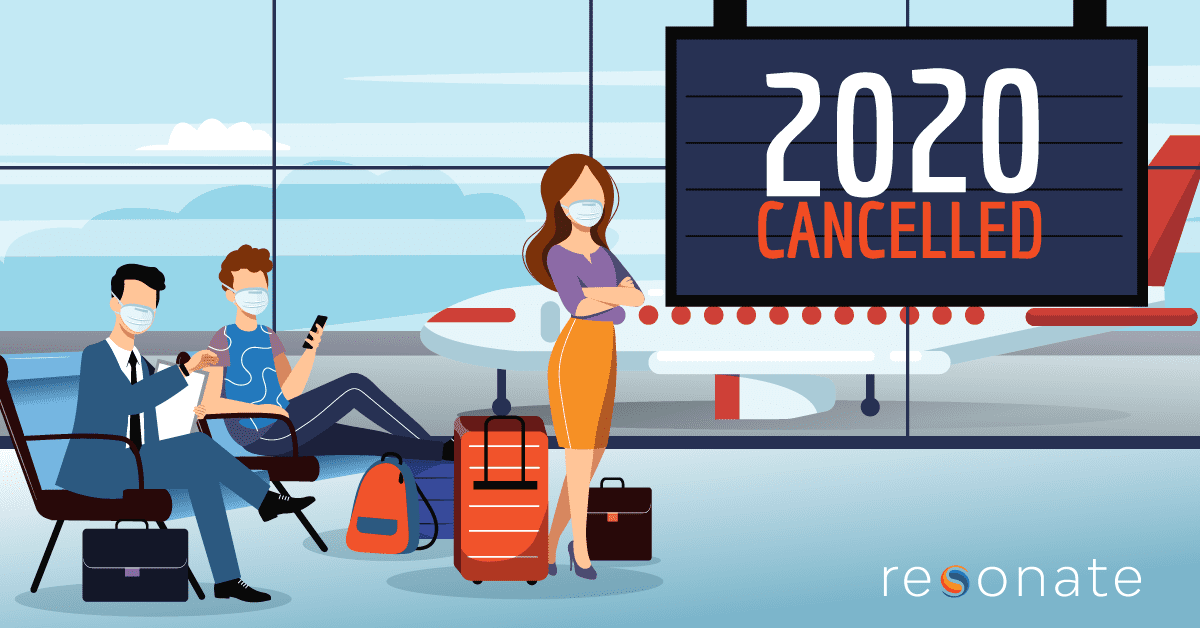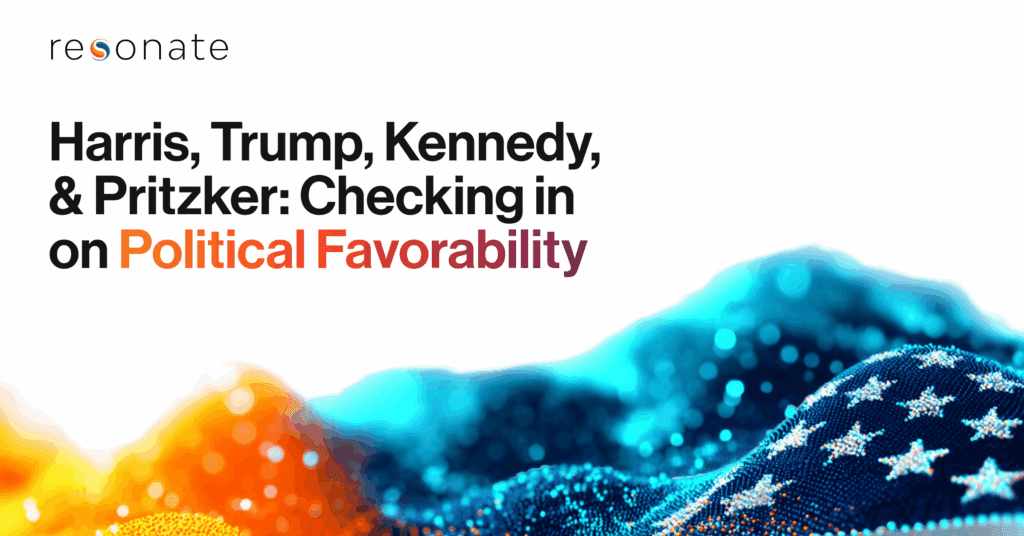As federal social distancing guidelines expire and states begin to ease restrictions on stay-at-home orders, it may feel like things are getting back to normal. However, according to Resonate’s real-time, proprietary data, there are nearly 28 million people who don’t believe life will get back to normal until 2021 – myself included.
These are consumers who believe that life in general and the economy won’t be back to “normal” until winter 2020 or later, and they don’t plan on eating at restaurants or traveling until 2021. As someone who recently postponed their wedding and international honeymoon due to COVID-19, I don’t think it’s entirely unreasonable for these 30 million consumers to write off 2020 completely. I’m right there with them. There’s a lot of debate around whether or not college campuses will open in the fall, if sporting events will take place with fans and if concerts will even be able to happen until there’s a vaccine. I, along with these consumers, believe we’ve got a long way to go before things can feel normal again, unlike the 46 million of Americans who believe life will return to normal in 1 – 3 months. That’s optimism I just can’t muster, so more power to them.
How can brands and media companies connect with this group of consumers who’ve written off 2020 completely, and doesn’t plan on visiting a restaurant or traveling anywhere until next year?
WHO ARE THEY?
This group is mostly made up of females ages 45-54 who are married with no children under 18 and have an annual household income of $25 – 50K. They value accepting those who are different, treating everyone equally and safety in one’s community and nation. They’re driven by proving their competence and skills, expressing individuality and having an optimistic outlook. It’s interesting to note than they’re motivated by an optimistic outlook, yet their expectation of life returning to normal isn’t until next year. Perhaps for them, next year is them being optimistic.
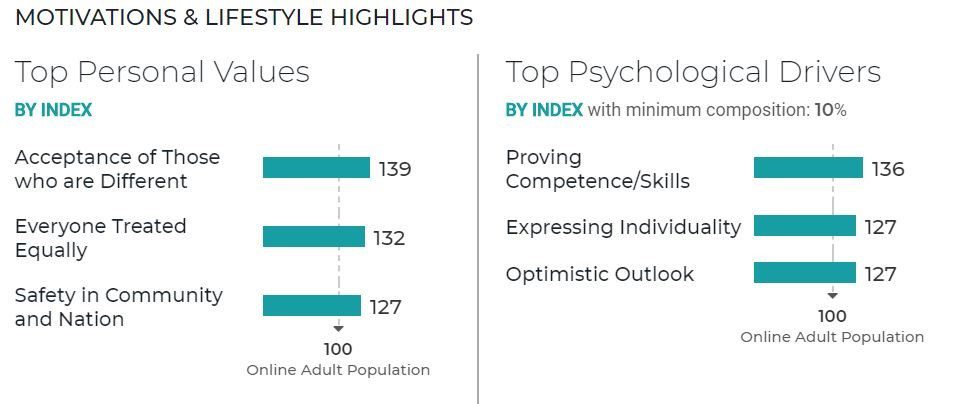
This group is centered focused on their health and wellness. They eat food with no carbs, calories, fats or salt. They buy food based on nutrition and are aware of their family health history. Their emphasis on health explains why they plan to wait until next year to visit restaurants or travel, as they want to limit their exposure to the virus for as long as possible. Consider emphasizing your healthier menu items available for takeout or delivery as a way to entice them to do business with you.
When it comes to key shopping factors, one of their top influences is supporting local/independently owned businesses. How can your company show support to the thousands of small businesses suffering at the hand of COVD-19? Back in March, UberEats announced it was waiving all delivery fees when customers order from local restaurants, saying in an email to users: “As more people stay home, local restaurants need your business more than ever.” Highlighting what your brand is doing to help small businesses will resonate with this segment.
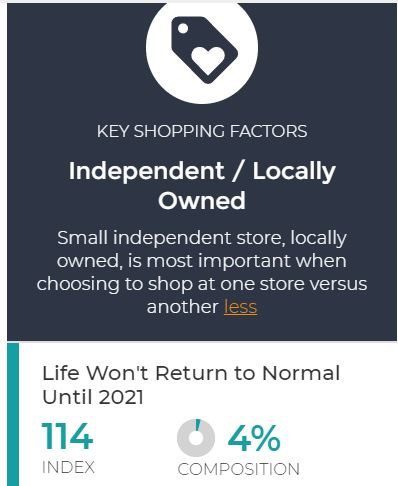
When it comes to corporate responsibility, this group is 28% more likely than the average U.S. consumer to prefer companies that treat their employees fairly. Let this segment know what you’re doing in the wake of COVID-19 to keep your employees healthy. Whether that’s extending their sick leave or allowing them to work from home, your employee treatment will go a long way with this group. They’re also 27% more likely to prefer companies who provide safe products. Emphasize what your employees are doing to keep your products clean and germ-free. Are they wearing gloves and masks while handling products? Are they wiping down the warehouse where products are made at the end of the day? These are things this segment wants to know about.
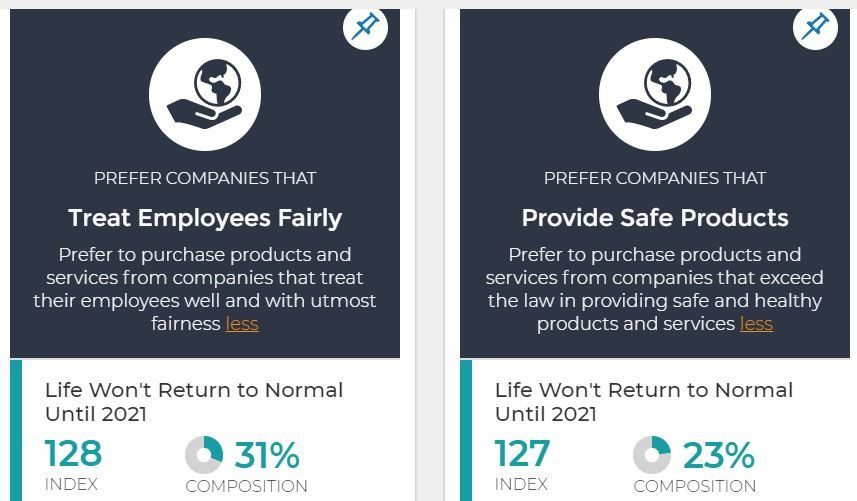
RESTAURANT AND TRAVEL PREFERENCES
When it comes to restaurants, this group isn’t taking advantage of mobile app ordering, delivery or pick-up options during the pandemic. 63% of these consumers don’t have a restaurant mobile app and 53% of them haven’t ordered delivery in the last three months. It’s unclear if this is due to their anxiety about the virus or if they just prefer dining out over ordering in.

When it comes to travel, this group likes visiting other parts of the world rather than traveling domestically. Their top destinations are eastern Europe/Russia and UK/Scotland/Ireland. This explains why this group probably won’t be traveling anywhere until 2021, as domestic travel is more likely to ramp back up before international travel does. Another reason this group is probably holding off on traveling until next year? One of their top factors in deciding where to go is based on their security and safety, which they would be jeopardizing if they traveled before a vaccine or effective treatment is developed.
KICKING 2020 TO THE CURB
Some might think that declaring 2020 as cancelled before it’s even halfway over is dramatic, but for this group, they’re not willing to risk their security, safety or health until there are more effective treatment plans or a vaccine in place. Rather than be let down month after month, they’ve written off having any semblance of a normal life until next year. As for me, 2020 has no business being here anymore. I’m ready and willing to open 2021 with open arms!
To learn more about consumer sentiment and behavior surrounding COVID-19 in order to gain a competitive advantage, read our report: Understanding U.S. Consumer Sentiment in the Coronavirus Pandemic.
